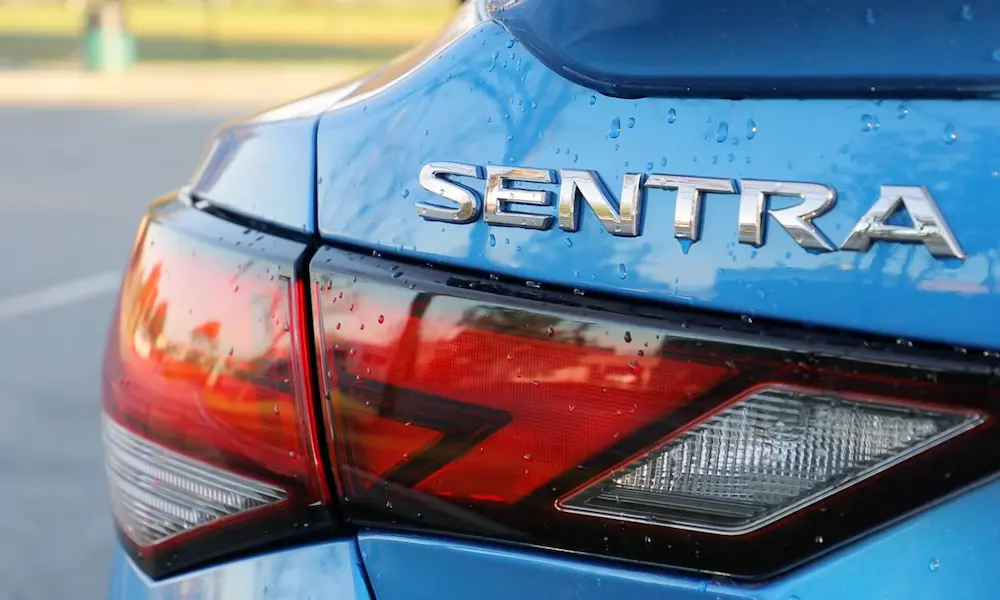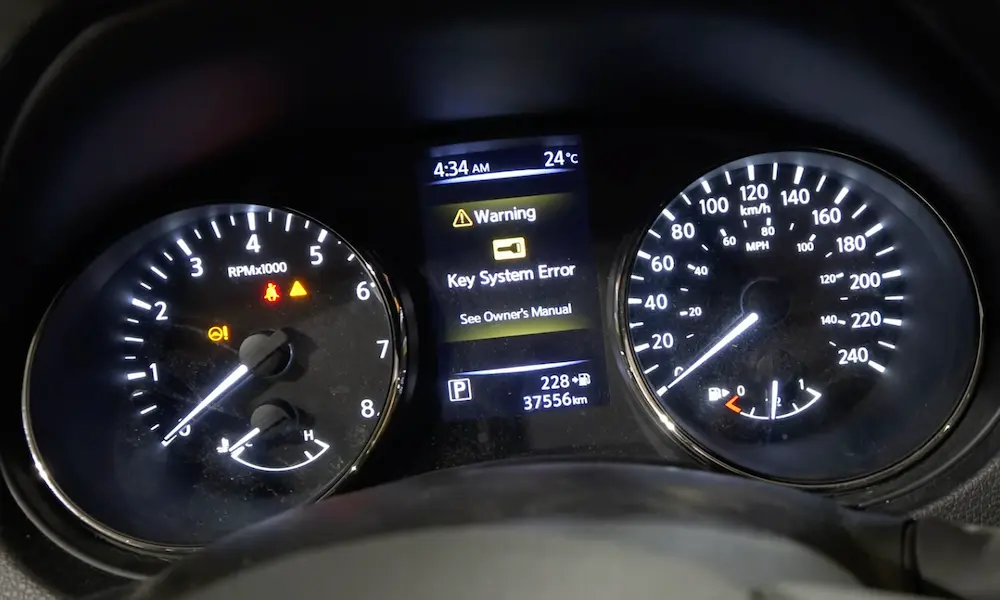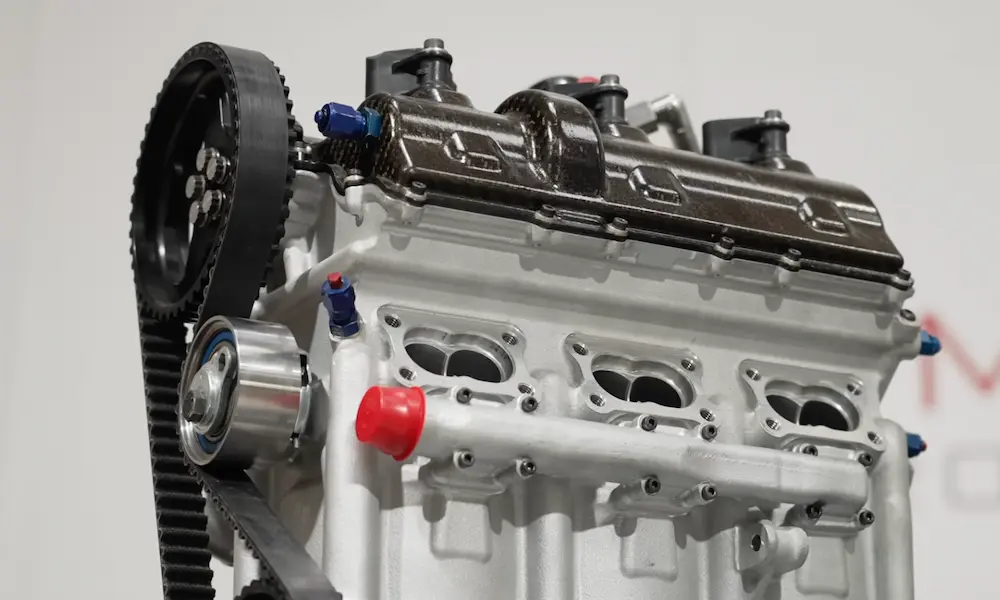Experiencing trouble with your Nissan Murano’s transmission can be frustrating, affecting your overall driving experience. Many Murano models, especially from 2003 to 2015, have reported issues like shaking and hesitation. These problems might seem daunting, but understanding them could help you find practical solutions. Reading this article could be the first step towards smoother, worry-free drives.
Recognizing Nissan Murano Transmission Problems
Recognizing transmission problems in your Nissan Murano early can help you avoid costly repairs. By paying close attention to symptoms like low transmission fluid, unusual noises, poor gear engagement, and unexpected surges, you can keep your vehicle running smoothly.
Symptoms of Low Transmission Fluid
Low transmission fluid can lead to several issues in your Nissan Murano. You might notice difficulty in shifting gears or a delay in acceleration. Checking the fluid level is the first step you should take if you experience these issues. To check, locate the transmission dipstick under the hood, remove it, and wipe it clean.
Place the dipstick back and pull it out again to check the level. The fluid should be within the proper range indicated on the dipstick. If it’s below the mark, you’ll need to add more. Also, make sure the fluid is a bright red color. Dark or dirty fluid means it’s time for a change. Keeping transmission fluid at the right level is crucial for the efficiency of the Murano.
Identifying Unusual Noises and Their Causes
Unusual noises coming from your vehicle can signal a problem with the transmission. A common issue with the Nissan Murano is a humming or whining noise, often linked to low fluid or failing bearings. If you hear a grinding or rattling sound, this might indicate worn-out gears or synchros.
Driving your Murano with such noises might worsen the problem and lead to more severe repairs. Listening for these sounds when starting or during acceleration can help detect issues early. Addressing these unusual noises promptly can prevent further damage and keep your vehicle in good condition.
Poor Gear Engagement and Performance Issues
Your Nissan Murano might occasionally struggle with gear engagement. This can manifest as hesitation, jerking, or even complete failure to shift correctly. If you notice these issues, there could be an underlying problem with the CVT transmission.
Sometimes, the Murano may feel sluggish when you try to speed up. These issues can result from worn components, low power, or troubles with the transmission. It’s crucial to have a professional look at your Murano to determine what’s causing these performance issues and resolve them.
Unexpected Surges While Driving
An unexpected surge or lurch while driving can be quite alarming. This might happen when your Murano suddenly accelerates without you pressing the pedal harder or changing gears. Such surges can be due to a faulty sensor or irregular transmission behavior.
Keeping an eye out for these sudden changes in speed is important for your safety and the health of your vehicle. Addressing the issue quickly by getting your vehicle checked can prevent potential accidents and ensure safer driving conditions.
Mechanical Aspects of Transmission Troubles
Transmission troubles in the Nissan Murano can affect how the vehicle performs. Issues involving faulty solenoids, a problematic torque converter, overheating, and eventual transmission failure can severely impact your driving experience.
Dealing with Faulty Solenoids
Faulty solenoids can cause significant issues in the Nissan Murano. Solenoids are small components that control the flow of transmission fluid. When they malfunction, you might experience poor shifting, gear slipping, or even stalling.
To handle this problem, check for error codes that indicate solenoid failures. Replacing these tiny parts might seem minor, but it can prevent larger issues later. Regular maintenance helps ensure they function correctly, saving you from further transmission troubles.
The Impact of a Faulty Torque Converter
The torque converter is crucial in transferring engine power to the transmission. When it becomes faulty, it can lead to shuddering and strange vibrations.
A bad torque converter may also cause a burning smell or reduced power output. Checking transmission fluid levels and ensuring they are adequate can sometimes help. In some cases, replacing the torque converter may be necessary. This solution can be expensive, but it addresses the heart of the problem, ensuring smoother vehicle operation.
Overheating: Causes and Prevention
Overheating is a common issue that can damage the transmission. Causes include low transmission fluid, heavy towing, or even a blocked cooler line. When the transmission overheats, it may produce a burning smell or cause permanent damage if not addressed.
Prevent overheating by checking fluid levels regularly and ensuring the transmission cooler is functioning. Engaging in regular maintenance and driving with awareness can prevent this issue from escalating. These steps help extend the life of your transmission, keeping your Nissan Murano running smoothly.
Consequences of Transmission Failure
Transmission failure in the Nissan Murano can lead to complete loss of driveability. Symptoms may include grinding noises, difficulty shifting gears, or a burning smell. Ignoring these signs can result in more expensive repairs down the road.
Addressing transmission failure early can save you significant trouble. Regular checks and prompt repairs are vital. By staying proactive, you ensure that your vehicle remains reliable and prevents disruption to your daily driving routine.
Nissan Murano’s Transmission Maintenance
Maintaining the transmission of your Nissan Murano is crucial for smooth driving and to avoid costly repairs. This requires you to adhere to a schedule for regular maintenance, pay attention to oil and fluid changes, and conduct visual inspections to catch any potential issues early.
Regular Maintenance Schedules
It’s important to follow a regular maintenance schedule for your Nissan Murano. The car manufacturer recommends specific intervals for checking and maintaining the transmission system. Regular check-ups can involve inspecting the CVT (Continuously Variable Transmission) and other core transmission components for any signs of wear and tear or leakage.
By visiting a qualified mechanic as per your maintenance schedule, you ensure that small issues don’t turn into significant problems that could lead to malfunctioning or a complete failure. A maintenance schedule will often include complete diagnostics that assess the transmission’s health, allowing you to plan any necessary repairs before they worsen.
The Necessity of Regular Oil and Fluid Changes
Transmission fluid plays a vital role in lubricating and cooling the moving parts in the transmission of your Nissan Murano. It’s recommended to replace the transmission fluid every 30,000 to 60,000 miles to keep your transmission running smoothly. Checking the color and level of the fluid can also alert you to potential transmission issues.
Using high-quality transmission oil and ensuring the fluid levels are adequate minimizes friction and overheating. This helps extend the lifespan of your transmission while avoiding common problems like juddering or sudden power loss. If unsure, consult your manual or a professional mechanic for advice on oil and fluid changes.
Visual Inspection: A Preventative Measure
Conducting regular visual inspections of your transmission can prevent larger issues down the line. Look out for signs like fluid leaks, odd noises, or a burning smell, which might indicate potential problems. Paying attention to warning lights on your dashboard can also be a clue that your transmission needs attention.
Early detection through visual inspection can keep your Murano’s transmission in top shape. Inspections don’t have to be extensive; a quick check for leaks underneath the car or ensuring there are no unusual sounds when driving is often enough to catch early signs of trouble, preventing expensive repairs later.
Advanced Transmission Care
Taking good care of your Nissan Murano’s transmission can help prevent problems down the line. Key elements include understanding the role of the Transmission Control Module (TCM) and knowing what to do if your vehicle enters limp mode.
The Role of Transmission Control Module
The Transmission Control Module (TCM) is crucial for the smooth operation of your Murano. It acts as the brain of the transmission, managing shifts based on data from sensors. A faulty TCM can cause irregular gear changes, leading to poor performance.
When the TCM detects problems, it may trigger a warning light on your dashboard. Regularly updating the TCM software may improve vehicle performance and avoid potential issues. If you notice any errors, getting the TCM checked by a professional can prevent serious problems.
Operating in Limp Mode: What to Do?
Limp mode is a safety feature activated when the transmission system identifies a significant fault. It limits the car to a low gear, allowing you to drive slowly to a service center. This mode prevents further damage to your transmission.
If your Murano enters limp mode, first check for obvious issues like low transmission fluid. Try restarting the vehicle to see if that resolves the problem. If the issue persists, visit a mechanic for a diagnostic test. Ignoring limp mode can lead to costly repairs, so it’s important to address it promptly.
Transmission Recalls and Service Campaigns
When it comes to Nissan Murano transmissions, there have been notable service campaigns rather than formal recalls.
In 2022, Nissan extended the warranty coverage on the Continuously Variable Transmission (CVT) for certain models. This means you could benefit from longer protection on parts like the CVT assembly and torque converter. You can find more details in the Quality Action Campaign.
While there might not be specific recalls, issues such as transmission juddering, shaking, and hesitation have led to many owners seeking solutions. It’s always a good idea to check your vehicle’s history to see if it’s part of any service campaigns.
If your Murano experiences problems such as sudden forward surges or high idling, these might not lead to recalls but could still be covered under extended warranties or service campaigns. For some drivers, fixes like replacing the transmission showed improvements.












